Find Help
More Items From Ergsy search
-

Podiatrist Fungal feet - fungal infection of skin and nails and how to prevent fungal infection in feet
Relevance: 100%
-
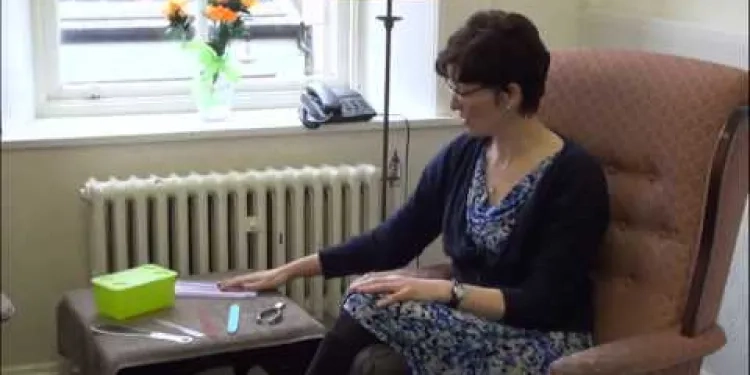
Podiatrist Personal Footcare
Relevance: 46%
-

Self care for your feet - Podiatrist
Relevance: 46%
-

NHS Looking after your feet - Podiatrist https://youtu.be/8J1v6K21ykc
Relevance: 44%
-
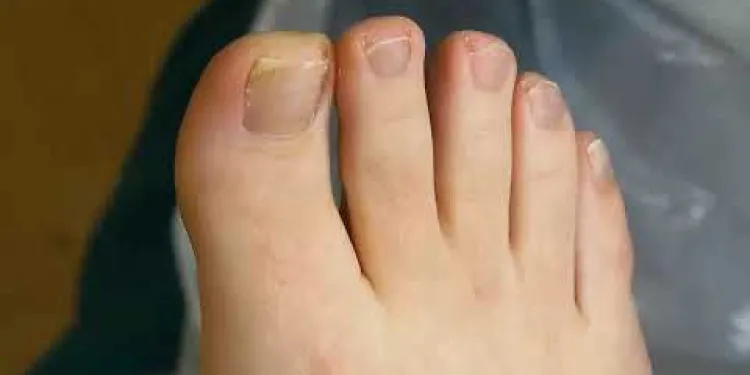
How to treat an ingrowing toenail / Involuted nail
Relevance: 37%
-
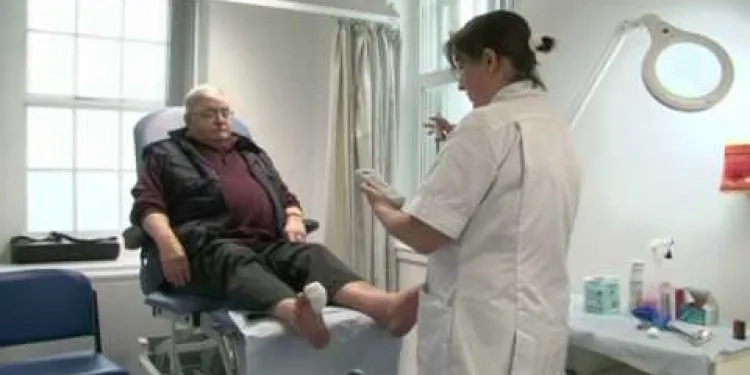
Diabetic Foot Conditions Podiatrist
Relevance: 31%
-

How is fungal meningitis treated?
Relevance: 26%
-

NHS Ayrshire and CVO East Ayrshire - ‘Feet First – Podiatry Services in East Ayrshire’
Relevance: 22%
-
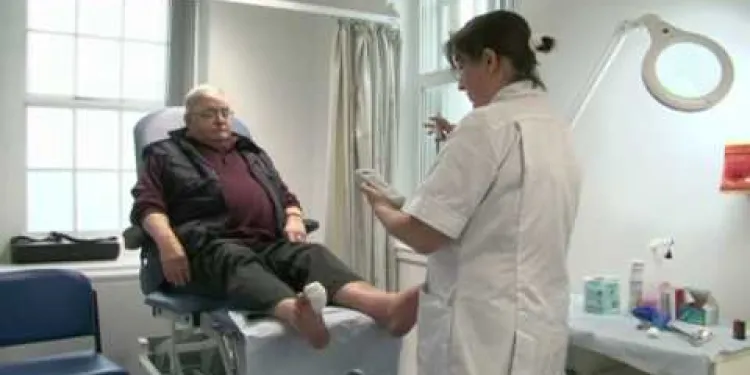
Diabetes Care - Preventing Amputations
Relevance: 21%
-

Can a stoma bag cause infections?
Relevance: 20%
-

How can I prevent norovirus infection?
Relevance: 18%
-
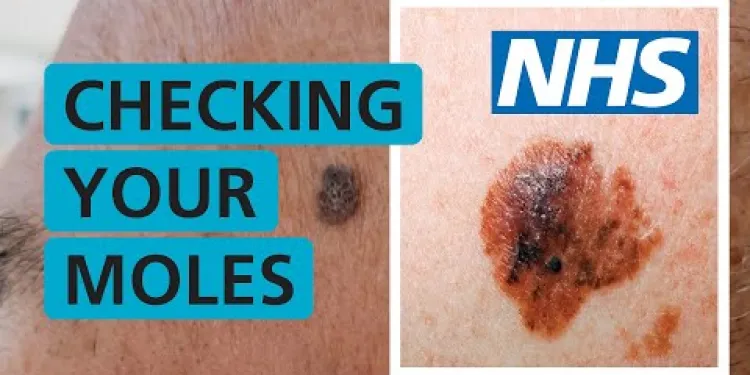
Skin Cancer - How do I check if my mole is skin cancer? | NHS
Relevance: 18%
-
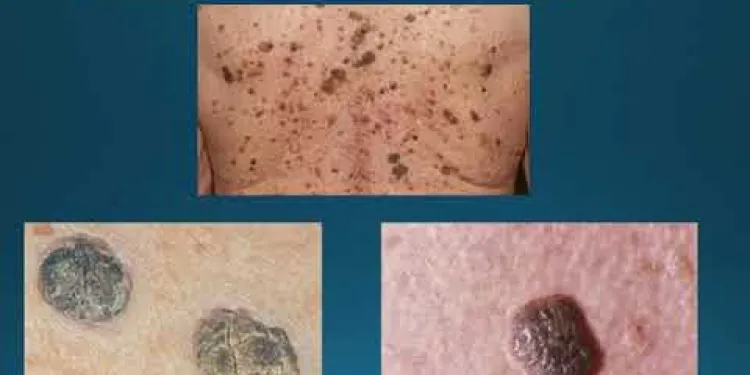
Skin cancer education
Relevance: 18%
-

Can air physiotherapy prevent respiratory infections?
Relevance: 17%
-

Hives - Skin Condition
Relevance: 17%
-

What complications are associated with Type 2 Diabetes?
Relevance: 16%
-
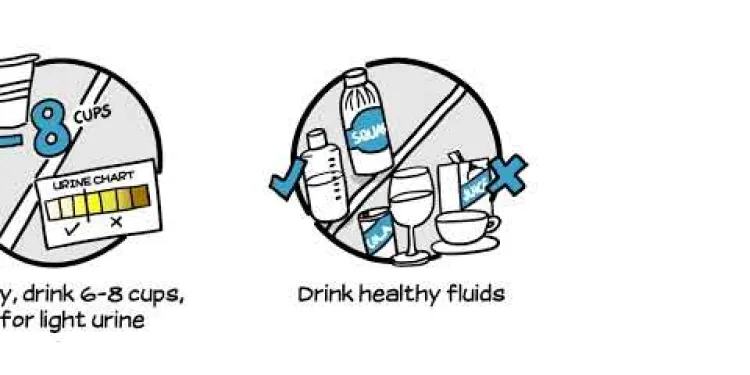
Avoiding infections with urinary incontinence
Relevance: 16%
-

What are opportunistic infections?
Relevance: 16%
-

What SPF should I use if I have sensitive skin?
Relevance: 15%
-

What preventive measures can reduce the risk of Nipah Virus infection?
Relevance: 15%
-

Are there symptoms of an HPV infection?
Relevance: 14%
-

How soon do symptoms appear after infection?
Relevance: 14%
-

Mycobacterium chimaera infection
Relevance: 14%
-

Can gonorrhoea infect areas other than the genital organs?
Relevance: 14%
-

Chest infection: what should I do?
Relevance: 13%
-

What are the symptoms of Nipah Virus infection?
Relevance: 13%
-

Self care: Treating ear infections
Relevance: 13%
-

What is Chikungunya virus infection?
Relevance: 13%
-
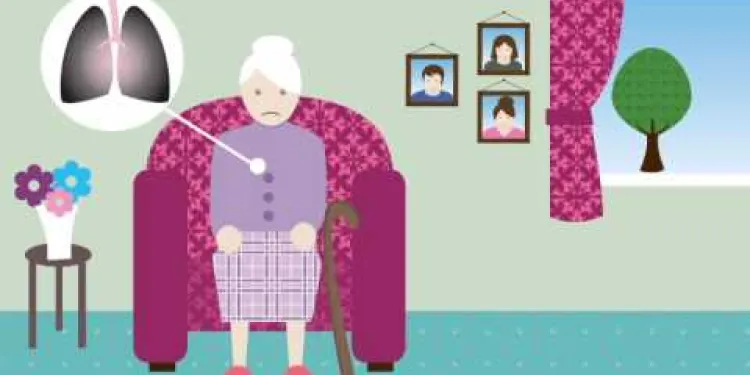
Dorothy's Story (Falls/Chest Infection)
Relevance: 13%
-

Can animals be infected with H3N2?
Relevance: 13%
-

Can bacterial infections be transmitted through blood transfusion?
Relevance: 13%
-

Can sunburn be prevented?
Relevance: 13%
-

How is psoriasis diagnosed?
Relevance: 13%
-

Sexually transmitted infections STIs
Relevance: 13%
-

Can Chikungunya virus infection be treated?
Relevance: 13%
-
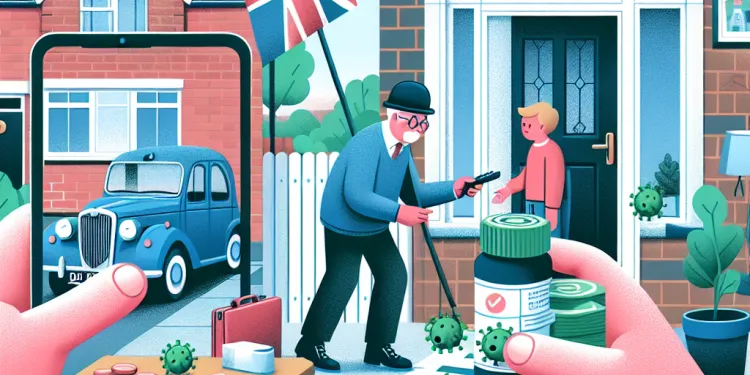
How can I prevent the spread of impetigo?
Relevance: 12%
-
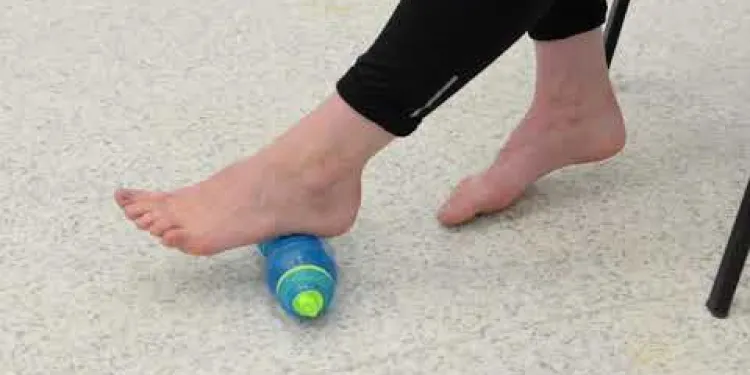
Foot Pain
Relevance: 12%
-

How can I prevent eczema flare-ups?
Relevance: 12%
-

How important is it to keep the skin moisturised with psoriasis?
Relevance: 12%
-

Antibiotics and You: An introduction to antibiotic resistant infections
Relevance: 12%
Podiatrist Fungal Feet: Understanding and Preventing Fungal Infections
What Are Fungal Infections of the Feet?
Fungal infections of the feet, commonly known as athlete's foot or tinea pedis, occur when fungi grow and multiply on the skin or nails. The warm, moist environments of shoes and socks provide an ideal breeding ground for these infections. Nail fungi, which can cause thickening and discoloration, offer a similar habitat for growth under nails. These infections are not only unsightly but can also lead to discomfort and pain if left untreated.
How Can Podiatrists Help?
Podiatrists are foot health experts who can diagnose and treat fungal infections effectively. They may use various treatments, including topical or oral antifungal medications. In some cases, they might recommend laser therapy or suggest changes in footwear or personal hygiene routines. Seeking the advice of a podiatrist at the initial signs of infection can prevent the condition from worsening, ensuring quick resolution.
Tips to Prevent Fungal Infections in Feet
Effective prevention involves several steps. Firstly, maintain good foot hygiene by regularly washing and thoroughly drying your feet, especially between the toes. Choose breathable footwear and moisture-wicking socks to reduce the humidity around your foot. When in communal areas like gym showers or swimming pools, wear flip-flops to protect your feet. Regularly trimming nails and keeping them clean can also prevent fungi from taking hold.
Special Considerations for the UK Climate
The UK's damp climate can exacerbate fungal foot problems as excessive moisture promotes fungal growth. During wet seasons, ensure your shoes dry completely between uses, and consider using antifungal powders or sprays. Additionally, employing a foot care routine that includes periodic check-ups with a podiatrist can help you stay ahead of potential fungal issues. With proactive measures, the risk of developing persistent fungal infections can be significantly reduced.
Podiatrist Fungal Feet: Understanding and Preventing Fungal Infections
What Are Fungal Infections of the Feet?
Fungal infections of the feet are known as athlete's foot. They happen when tiny germs grow on your skin or nails. These germs like warm and wet places, such as inside shoes and socks. Fungal infections can make your nails thick and change color. They can look bad and hurt if you don't treat them.
How Can Podiatrists Help?
Podiatrists are doctors who take care of your feet. They can find out if you have a fungal infection and help you feel better. They might give you medicine to put on your skin or to take by mouth. Sometimes, they use a special light to treat the infection. They might tell you to change your shoes or show you better ways to wash your feet. Seeing a podiatrist early can stop the infection from getting worse.
Tips to Prevent Fungal Infections in Feet
You can do a few things to stop fungal infections. Wash your feet every day and dry them well, especially between your toes. Wear shoes that let air in and socks that keep your feet dry. When you are at the gym or pool, wear flip-flops to keep your feet safe. Cut your nails regularly and keep them clean to stop germs from growing.
Special Considerations for the UK Climate
The UK is often wet, which can make fungal infections worse. Make sure your shoes dry out before you wear them again. Use powders or sprays that fight germs. Go to a podiatrist sometimes to check your feet. By taking care of your feet, you can avoid many fungal problems.
Frequently Asked Questions
What is a fungal infection of the feet?
Fungal infection of the feet, also known as athlete's foot, is a common skin condition caused by a fungus that thrives in warm and moist environments. It typically affects the skin on the feet and can also spread to the nails.
What are the symptoms of a fungal foot infection?
Symptoms include itching, cracked, blistered or peeling areas of skin, redness and scaling on the soles, flaky patches that can look similar to eczema, and in more severe cases, blisters filled with fluid.
How do fungal infections affect toenails?
Fungal infections can cause toenails to become thickened, discoloured, brittle, or misshapen. Infected nails may separate from the nail bed, and in severe cases, can even fall off.
How can I prevent athlete's foot?
To prevent athlete's foot, keep your feet clean and dry, particularly between the toes. Wear well-ventilated shoes, change socks regularly, and avoid walking barefoot in public places like pools and gym changing rooms.
Are fungal foot infections contagious?
Yes, fungal foot infections are contagious and can be spread through direct contact with infected skin or by coming into contact with contaminated surfaces, such as floors, towels, or footwear.
What should I do if I suspect I have a fungal foot infection?
If you suspect you have a fungal foot infection, it is advisable to consult a healthcare professional, such as a podiatrist, who can diagnose the condition and suggest appropriate treatment.
What treatments are available for fungal foot infections?
Treatments include antifungal creams, sprays, and powders applied to the affected area. In more severe cases, oral antifungal medications may be prescribed. It's important to complete the entire course of treatment even if symptoms improve.
Can home remedies help treat fungal foot infections?
Some people find relief using home remedies like tea tree oil, baking soda, or vinegar soaks. However, evidence of their effectiveness is limited, and it's best to consult a healthcare professional for reliable treatment.
How long do fungal foot infections take to clear up?
The duration depends on the severity of the infection and the treatment used. Mild cases can resolve in a few weeks, while more severe infections, especially those affecting the nails, may take several months to fully clear.
Can fungal foot infections recur?
Yes, fungal foot infections can recur, especially if preventive measures are not followed. It's important to maintain good foot hygiene and apply antifungal powders or sprays as part of ongoing foot care.
Is it necessary to throw away shoes if I have a fungal infection?
It's not always necessary to throw away shoes, but it's important to disinfect them to prevent re-infection. You can use antifungal sprays or powders to treat your footwear.
Can nail polish or artificial nails worsen fungal infections?
Wearing nail polish or artificial nails can trap moisture and provide a breeding ground for fungi. It's best to avoid them if you have an active fungal nail infection.
Are there any risk factors for developing fungal infections of the feet?
Factors include wearing tight footwear, having a weakened immune system, excessive sweating, and walking barefoot in damp public areas such as pools and showers.
When should I see a podiatrist for a fungal infection?
See a podiatrist if you have tried over-the-counter treatments and the infection persists, if you are diabetic, or if the infection affects your daily life. A podiatrist can provide a comprehensive treatment plan.
Can diet affect fungal infections?
While diet alone is unlikely to cause or cure fungal infections, some believe that a diet low in sugars and carbohydrates can help prevent or reduce the severity of the infections. However, scientific evidence is limited, and maintaining good hygiene is key.
What is a fungal infection of the feet?
A fungal infection of the feet is when tiny germs, called fungi, grow in the skin of your feet. This can make the skin red, itchy, and sometimes cracked. It often happens between the toes.
Here are some things that can help you learn more:
- Look at simple pictures of feet and fungi.
- Use apps that read text out loud.
- Ask an adult to explain words you do not know.
Athlete's foot is a skin problem that happens on your feet. It is caused by tiny germs called fungus. Fungus likes to live in warm and wet places.
Athlete's foot can make your skin itchy and sore. It can also spread to your toenails.
If you think you have athlete's foot, it helps to keep your feet clean and dry. You can also talk to a doctor for help.
What happens when you have a fungal foot infection?
If you have a fungal foot infection, you might notice:
- Your skin gets red.
- Your skin feels very itchy.
- Your skin is peeling or has small cracks.
- Your feet smell bad.
- Your nails look different or change color.
If you think you have a fungal foot infection, it's a good idea to talk to a doctor or a nurse.
Using a magnifying glass or reading ruler can help you read easier. You can also ask someone to read with you.
Signs of the problem can be: itchy skin, cracked or broken skin, areas with blisters or peeling skin, red skin, and dry, scaly skin on the bottoms of your feet. It might look like eczema. If it gets worse, there could be blisters with liquid inside.
What happens to toenails when you have a fungal infection?
A fungus is a tiny germ. It can get under your toenail. This can make your nail look different.
Your toenail might:
- Turn yellow or white
- Get thicker
- Feel crumbly or rough
If you think you have a fungus, ask a grown-up or doctor for help.
Using a magnifying glass can help you see small details on your nail.
Fungus can make toenails thick, look different in color, break easily, or change shape. The nails might lift away from the skin underneath. If it gets really bad, the nails could even come off.
To help with reading, you can use tools like text-to-speech that read words out loud. Highlighting words while reading can also make it easier to follow along.
How can I stop athlete's foot?
Athlete's foot is a sore and itchy rash on your feet. Here’s how to stop it:
- Keep your feet clean and dry.
- Change socks every day.
- Wear shoes that let your feet breathe.
- Use flip-flops in public showers or pools.
If you need help reading, you can:
- Ask someone to read it with you.
- Use audiobooks or read-aloud tools.
To stop athlete's foot, do these things:
- Wash your feet every day. Make sure they are dry, especially between the toes.
- Wear shoes that let air in.
- Change your socks often.
- Don't walk barefoot in places like pools and gym changing rooms.
Try to get help if you find it hard. You can ask someone to read with you, or use audiobooks to listen to the text.
Can you catch a foot infection from fungus?
Yes, you can catch it from another person or place.
Fungus can spread:
- By walking barefoot in places like showers, swim pools, or gym floors.
- From sharing towels, socks, or shoes with someone who has it.
Here are ways to stay safe:
- Always wear flip-flops or sandals in public places.
- Do not share personal items like towels or shoes.
- Keep your feet clean and dry.
If you think you have a foot infection, talk to a doctor.
Yes, foot fungus can spread from one person to another. It spreads by touching infected skin or things like floors, towels, or shoes that have the fungus on them.
What to Do If You Think You Have a Foot Fungus
Do your feet itch or have red patches? You might have a fungus infection on your foot.
Here are some steps to help:
- Tell an Adult: Talk to a grown-up, like a parent or guardian. They can help you.
- Wash Your Feet: Clean your feet gently with soap and water.
- Dry Your Feet: Make sure to dry them well, especially between your toes.
- Wear Clean Socks: Change your socks every day to keep your feet clean.
- Visit a Doctor: An adult can take you to see a doctor. The doctor can help you get better.
Remember, it's important to take care of your feet and tell someone if you have a problem.
Tools that might help:
- Use a soft towel to dry your feet.
- Try using comfy shoes that let your feet breathe.
If you think you have a foot fungus, it's a good idea to see a doctor. A foot doctor, called a podiatrist, can check your feet and help you get the right medicine to make them better.
How can you treat fungus on your feet?
If you have fungus on your feet, there are ways to make it better. Here are some simple steps:
- Wash your feet every day. Use soap and water.
- Keep your feet dry. Dry between your toes well.
- Wear clean socks. Change them if they get sweaty.
- Use a special cream or spray. You can get these from the pharmacy.
- See a doctor if it doesn't get better. They can help.
Remember, it's important to take care of your feet!
You can use pictures or watch videos to understand better. Ask an adult if you need help.
You can use special creams, sprays, or powders to help make the problem go away. You put them on the spot where the problem is. If it's really bad, a doctor might give you medicine to swallow. It's very important to use all the medicine, even when you start to feel better.
Can simple treatments at home help cure foot fungus?
Some people feel better when they use things from home like tea tree oil, baking soda, or vinegar soaks. But we don't know for sure if these work well. It’s a good idea to talk to a doctor or nurse for help that works for sure.
How long does it take for a foot fungus to go away?
How long it takes to get better depends on how bad the infection is and the medicine used. If it's not too bad, you might feel better in a few weeks. If it's really bad, like in your nails, it could take a few months to get better.
Reading tools can help, like listening to the text with audio software or using apps that highlight words as you read. This can make understanding easier!
Can foot fungus come back?
Sometimes, foot fungus can come back after it goes away.
Here are some tips to help stop it from coming back:
- Wash your feet every day and dry them well, especially between the toes.
- Change your socks daily and wear shoes that let your feet breathe.
- Avoid sharing towels, shoes, or socks with other people.
If foot fungus keeps coming back, talk to a doctor for help.
Yes, foot fungus can come back. It’s important to keep your feet clean and dry. Use special foot powders or sprays to stop the fungus. This will help your feet stay healthy.
Do I need to get rid of my shoes if I have foot fungus?
You don't always have to throw away your shoes. It is important to clean them to stop germs from coming back. You can use sprays or powders that fight germs to clean your shoes.
Can using nail polish or fake nails make a fungus infection worse?
Wearing nail polish or fake nails can keep your nails wet. This wetness can help fungus grow. If your nails are infected with fungus, it is a good idea not to use nail polish or fake nails.
What can make you more likely to get a foot fungus?
Here are some things that make it easier for fungus to grow on your feet:
- Not keeping your feet clean and dry
- Wearing tight shoes
- Using public showers or swimming pools
- Having sweaty feet
Here are some tips to help you:
- Wash your feet every day and dry them well
- Wear shoes that fit well
- Use flip-flops in public showers or pools
- Change your socks if they get wet
There are different things that can cause foot problems. Here are some:
- Wearing shoes that are too tight.
- Having a weak body defense system.
- Sweating a lot.
- Walking barefoot in wet places like pools and showers.
To help, you can:
- Wear comfy shoes that fit well.
- Keep your feet clean and dry.
- Wear flip-flops in public showers and pools.
When should I visit a foot doctor for a fungal infection?
If you think you have a fungal infection on your feet, it is a good idea to see a foot doctor. Here are some times when you should go:
- If your toes or feet are red, itchy, or have a rash.
- If your toenails are yellow or crumbly.
- If you have tried medicine from the store, but it did not help.
- If it hurts to walk because of your feet.
Tools that might help:
- Ask a friend or family member to go with you to the doctor.
- Write down your questions and take them with you.
- Use pictures or drawings to help you talk about the problem.
Go see a foot doctor if:
- You have tried medicine from the store and the infection won't go away.
- You have diabetes.
- The infection makes it hard to do your daily activities.
A foot doctor can help you with a plan to get better.
Can what you eat change fungal infections?
The food you eat can change fungal infections. This means eating different foods might make the infections better or worse.
If you have a fungal infection, it can help to talk to a doctor. They can give you advice on what foods might be good or bad for you.
Some people find it helpful to look at pictures of good foods. You can try making a list of foods you eat. This list can help you and your doctor choose the best foods for you.
Eating certain foods might not cause or fix fungal infections, but some people think that eating less sugar and bread might help with these infections. Scientists are not sure if this really helps. The most important thing is to keep clean.
Useful Links
- Ergsy carfully checks the information in the videos we provide here.
- Videos shown by Youtube after a video has completed, have NOT been reviewed by ERGSY.
- To view, click the arrow in centre of video.
- Most of the videos you find here will have subtitles and/or closed captions available.
- You may need to turn these on, and choose your preferred language.
- Go to the video you'd like to watch.
- If closed captions (CC) are available, settings will be visible on the bottom right of the video player.
- To turn on Captions, click settings .
- To turn off Captions, click settings again.
More Items From Ergsy search
-

Podiatrist Fungal feet - fungal infection of skin and nails and how to prevent fungal infection in feet
Relevance: 100%
-

Podiatrist Personal Footcare
Relevance: 46%
-

Self care for your feet - Podiatrist
Relevance: 46%
-

NHS Looking after your feet - Podiatrist https://youtu.be/8J1v6K21ykc
Relevance: 44%
-

How to treat an ingrowing toenail / Involuted nail
Relevance: 37%
-

Diabetic Foot Conditions Podiatrist
Relevance: 31%
-

How is fungal meningitis treated?
Relevance: 26%
-

NHS Ayrshire and CVO East Ayrshire - ‘Feet First – Podiatry Services in East Ayrshire’
Relevance: 22%
-

Diabetes Care - Preventing Amputations
Relevance: 21%
-

Can a stoma bag cause infections?
Relevance: 20%
-

How can I prevent norovirus infection?
Relevance: 18%
-

Skin Cancer - How do I check if my mole is skin cancer? | NHS
Relevance: 18%
-

Skin cancer education
Relevance: 18%
-

Can air physiotherapy prevent respiratory infections?
Relevance: 17%
-

Hives - Skin Condition
Relevance: 17%
-

What complications are associated with Type 2 Diabetes?
Relevance: 16%
-

Avoiding infections with urinary incontinence
Relevance: 16%
-

What are opportunistic infections?
Relevance: 16%
-

What SPF should I use if I have sensitive skin?
Relevance: 15%
-

What preventive measures can reduce the risk of Nipah Virus infection?
Relevance: 15%
-

Are there symptoms of an HPV infection?
Relevance: 14%
-

How soon do symptoms appear after infection?
Relevance: 14%
-

Mycobacterium chimaera infection
Relevance: 14%
-

Can gonorrhoea infect areas other than the genital organs?
Relevance: 14%
-

Chest infection: what should I do?
Relevance: 13%
-

What are the symptoms of Nipah Virus infection?
Relevance: 13%
-

Self care: Treating ear infections
Relevance: 13%
-

What is Chikungunya virus infection?
Relevance: 13%
-

Dorothy's Story (Falls/Chest Infection)
Relevance: 13%
-

Can animals be infected with H3N2?
Relevance: 13%
-

Can bacterial infections be transmitted through blood transfusion?
Relevance: 13%
-

Can sunburn be prevented?
Relevance: 13%
-

How is psoriasis diagnosed?
Relevance: 13%
-

Sexually transmitted infections STIs
Relevance: 13%
-

Can Chikungunya virus infection be treated?
Relevance: 13%
-

How can I prevent the spread of impetigo?
Relevance: 12%
-

Foot Pain
Relevance: 12%
-

How can I prevent eczema flare-ups?
Relevance: 12%
-

How important is it to keep the skin moisturised with psoriasis?
Relevance: 12%
-

Antibiotics and You: An introduction to antibiotic resistant infections
Relevance: 12%


